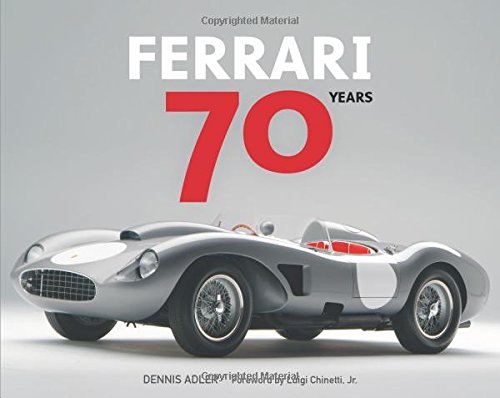
Just before midnight on May 14, 1914, a ferryboat departed from Weehawken, New Jersey and chugged along in the darkness across the Hudson River to Manhattan. On board was a tired-looking rider with an equally tired-looking motorcycle. The boat landed at ten minutes after midnight and there to greet him were representatives from the Federation of American Motorcyclists, the nation’s major motorcycle sanctioning organization. What they knew was that this rider, Erwin G. Baker, had just completed the fastest transcontinental trip in American history.
Baker’s journey of 3,497 miles had taken him 11 ½ days. And, oh, what an incredible 11 ½ days it was! After leaving San Diego on May 3rd he rode coast to coast, averaging only four hours sleep each night. Danger seemed to await him at every turn. In the Arizona desert he ran out of gas and had to push his motorcycle five miles in the sand in 119-degree heat. When he got to New Mexico he hit some rainy weather, which turned the historic Santa Fe Trail into a deep mud bog. He suffered six flat tires once on the same day, which he had to repair with the tools he carried with him, and in Pennsylvania he rode 232 miles of mud in a steady downpour. Despite all this, Baker continued east as fast as he could legally go. When he landed on Manhattan, he had smashed the current record holder’s long-standing record by more than nine days. His amazing journey concluded at the Hotel Astor in New York City where he was met by journalists wanting to get the story. One shouted out that he had “shot across the country like a cannon ball.” He was forever more Cannon Ball Baker!
In 2011, Don Emde, a former winner of the prestigious Daytona 200 motorcycle race and 1999 Inductee to the Motorcycle Hall of Fame, embarked on a multi-year project to understand the riding conditions and retrace the route that Cannon Ball Baker had taken in 1914. Using modern day computer search tools, GPS, and current adventure-style motorcycles, he and an assistant, Joe Colombero, logged numerous miles in the California and Arizona desert to work out what remains of the dirt roads that Baker had ridden. Their research ultimately took them on a ride all the way to New York City on the same route that Baker had taken. Their discoveries and difficulties is a great story in itself. Finally, in 2014, Emde led a group of 30 motorcyclists on a celebration ride from San Diego to New York City, just as Baker had done a century before. The group departed on May 3rd—100 years to the minute from when Cannon Ball had left San Diego—and arrived in New York just as he had on May 14th.
This is the story of three epic motorcycle rides across America.

My Greatest Defeat is a collection of honest and revealing insights into 20 of the greatest living racing drivers, legends of the worlds of Formula 1, Indycar, NASCAR, Le Mans and Rally. Interviews conducted specially for this book are with (in alphabetical order) Mario Andretti, Derek Bell, Emerson Fittipaldi, Dario Franchitti, Jeff Gordon, Mika Häkkinen, Damon Hill, Jimmie Johnson, Tom Kristensen, Niki Lauda, Sebastien Loeb, Felipe Massa, Rick Mears, Emanuele Pirro, Alain Prost, Carlos Sainz, Jackie Stewart, Bobby Unser, Ari Vatanen and Alex Zanardi. Here are five highlights…
- Dario Franchitti — The Indycar champion talks of the deaths of the friends that book-ended his career in racing, the heartbreak that each caused and the aftermath of accidents that affected the physical functioning of his brain.
- Jeff Gordon — One of the all-time NASCAR greats, he looks back on his many championships, admitting that today he cannot view a single one with anything but regret as family relationships were soured and stretched to breaking point.
- Jimmie Johnson — One of the greatest stock car drivers in history, Johnson was at one time considered a reckless outcast. He reflects on the little-known crash that almost killed him and changed his mindset forever.
- Niki Lauda — A racer who needs no introduction, Niki Lauda discusses the loss of one of his aircraft over Thailand in which all on board were killed; for eight months he fought to clear the name of his pilots and change aircraft safety forever.
- Alex Zanardi — In a deep and revealing conversation, the Paralympic gold medalist, who lost both legs in an Indycar accident, discusses how we decipher between our passion and our ambition and how childhood dreams affect our adult decisions.
Striking portrait artworks come from a revered artist in modern comic book design, Giuseppe ‘Cammo’ Camuncoli, who is renowned for the dark, brooding style that has seen him become a staple in the Vertigo, DC and Marvel stables.

Fly with the best in Top Gun: 50 Years of Naval Air Superiority—the definitive, highly illustrated, in-depth look at the Navy’s famous fighter unit, including its history, technology, and culture.
Top Gun: 50 Years of Naval Air Superiority begins with a fascinating behind-the-scenes account of the blockbuster film that helped America shake off the trauma of the Vietnam War and once again take pride in its military. The book then launches into the even more incredible story of why and how such men consistently capture the imagination of children, adults, pilots, and audiences around the world.
Chapters spotlight pivotal military movies and television shows that presaged the movie Top Gun, including edge-of-the-seat vignettes and anecdotes of pilots and their lifestyles, the origin of the Navy’s fighter pilot program and its rigorous training, and how it inspired the Air Force’s counterpart, Red Flag.
Other chapters highlight what it takes to be a pilot in other branches of the armed forces, and takes a look back in time at the most notorious (and feared) pilots of World War I and World War II from all around the globe. Fast forward to the jet age, when the first aces flew hair-raising missions over Korea and Vietnam, and learn how past and contemporary aerial dogfighting really works.
The book also reveals the many technological advances that transformed aerial combat from the dangerous, unsynchronized machine guns that bounced bullets off propellers in World War I to today, where air-to-air missiles are launched by pilots who have no visual contact with an adversary, and finally illustrates how drones are adding a new dimension to the meaning of Top Gun.
Finish with an in-depth look at Naval Station Fallon, one of the most modern and renowned American naval stations, located outside Fallon, Nevada. Top Gun: 50 Years of Naval Air Superiority concludes with a look at Top Gun 2, the highly anticipated sequel to one of the biggest action movies of all time and the one that made Tom Cruise a worldwide superstar.
Featuring over 200 photos, new interviews and stories from aces, engineers, commanders, and more, and written by best-selling author and president of the Military Writers Society of America, Dwight Zimmerman, Top Gun: 50 Years of Naval Air Superiority is the must-have guide to the fastest, deadliest, most storied aerial combat squadron the world has ever known.
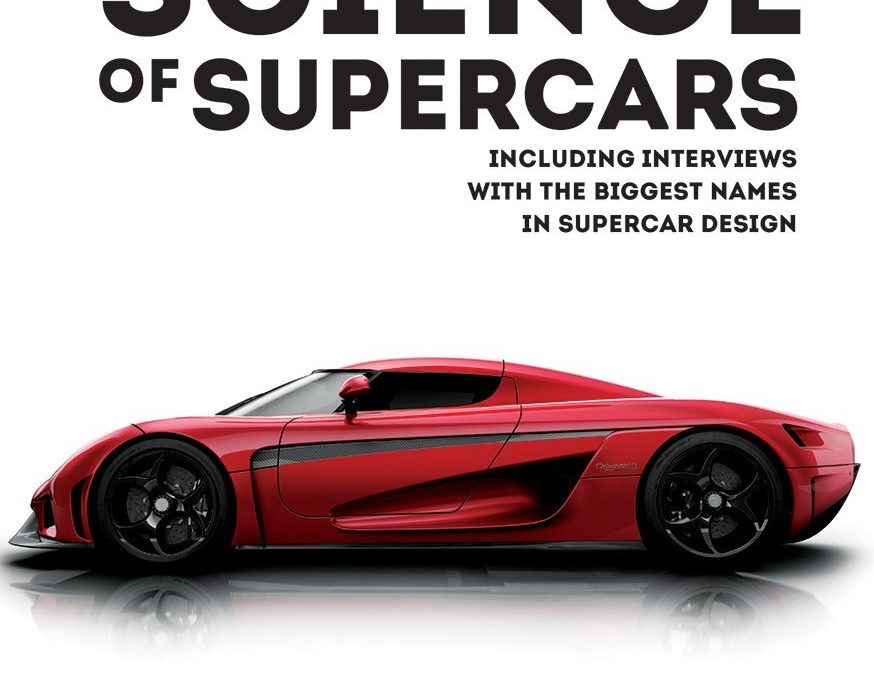
Trace the evolution of the supercar through the technology that drives it.
In The Science of Supercars, the authors describe the history of supercars, unraveling the mysteries and mechanics of the cars that changed the automotive world forever. In-depth interviews with the top names in the supercar and racing industries reveal their opinions on today’s supercars and their visions for the future.
David Coulthard, runner-up in the 2001 Formula One World Drivers’ Championship, provides the introduction. The authors follow with comprehensive chapters of inside information and exciting photographs that will be a catalog for supercar shoppers and a dream diary for others. The images show the interiors and exteriors of supercars and illustrated insets explain the technology.
-
1. The Thirst for Power – The internal combustion engine and the early days of speed
2. Style Versus Substance – Next steps, and the birth of aerodynamics
3. Emerging Technologies – The mechanics of war drive the birth of the supercar
4. Configuration – The Miura, the E-Type and the dawn of the modern age
5. The Science of Theater – Fashion and styling take center stage
6. The Turbo Years – The Porsche Turbo and the rebirth of supercar science
7. All-Wheel drive – Power or technology: how designers keep the cars on the road
8. Composites – The McLaren F1 and its technological legacy
9. Emerging Aero – Understanding the complex art of aerodynamics
10. Going to the Opera – The remarkable science behind the era-defining Bugatti Veyron
11. The Holy Trinity – Hybrid tech ushers in a new kind of supercar
12. The Future – The technology on the verge of reshaping the landscape.The Science of Supercars includes interviews with three of the top figures in the supercar world: Adrian Newey, legendary British Formula One engineer; Dr. Wolfgang Schrieber, Chief Engineer of the Bugatti Veyron; and Gordon Murray, designer of the McLaren F1 supercar, as well as contributions from iconic supercar manufacturers that include Lamborghini, Porsche, Bugatti, Pagani and McLaren.
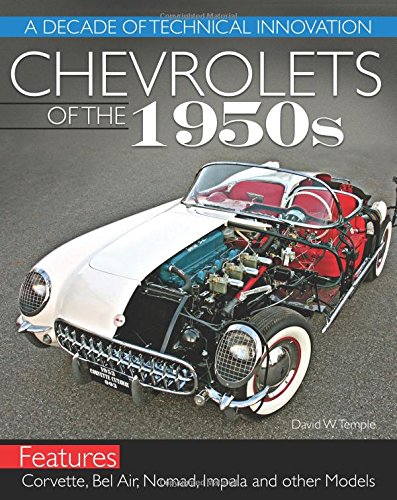
As the 1950s dawned, General Motors focused its industrial might on producing revolutionary rather than evolutionary cars with the ultimate goal to become the clear market leader in the automotive industry. To accomplish this goal, the company designed, developed, and consistently released innovative automotive technology. During the decade, Chevrolet introduced the small-block V-8, the Powerglide automatic transmission, air-conditioning, power steering, and many other innovations that made the cars faster, more comfortable, and safer.
All of the pieces had fallen into place. General Motors had astute leadership, a brilliant engineering team, forward-thinking stylists, a massive manufacturing infrastructure, and the capability to produce cutting-edge technology. With unbridled optimism and exuberance to meet the demands of the booming U.S. economy of the 1950s, the company designed, developed, and delivered an unprecedented number of breakthrough technologies, and established the blueprint for the modern automobile.
Automotive historian and veteran author David Temple goes behind the scenes to reveal how these technologies were designed, manufactured, and installed on Chevrolet’s fine portfolio of cars: the Corvette, 1955-1957 Bel Air, Nomad, Impala, and many more. Inside General Motors, many dedicated and talented leaders who were determined to make Chevrolet cars the best on the market. Vice President of Styling Harley Earl and his team designed the 1953 Corvette concept car for the Motorama show. After receiving numerous accolades, it was rushed into production. Design chief Harley Earl used his design acumen and creative vision as he led his team to style the 1955-1957 Bel-Air. Zora Arkus-Duntov worked tirelessly and transformed the Corvette from a touring car into a genuine sports car. Ed Cole and his engineers overcame many challenges to develop the compact, efficient, and powerful Chevy small-block V-8, which continued in production for decades.
Chevrolets of the 1950s retraces the design, development, and production of these cars, but it also covers innovative vital components that were installed in them. If you have been looking for the inside story on GM’s arguably greatest decade, the models, and the technology it produced, you have found it.

The postwar Morris Minor, designed by Alec Issigonis, was one of the most popular British Cars. 2018 marks 70 years since the first Minors rolled off the production lines at Cowley in Oxfordshire. In this celebratory publication Ray Newell looks in detail at the development of the wide range of models produced during a production run that spanned twenty two years in the UK. Using mainly contemporary materials covering four decades, he transports the reader back to an era when the pace of life was much slower and the marketing of the vehicles was considerably different to the slick advertising of today. The worldwide appeal of this trend-setting vehicle is examined in the context of the ‘export or die’ mentality that dominated postwar Britain, as are the innovative production methods used to ensure that ‘Morris Motors Ltd’ lived up to its ‘quality first’ reputation. Variations from standard specifications are considered with reference to mechanical uprating, different body styles and the use of modern accessories to enhance further the comfort and styling of what was dubbed ‘The World’s Supreme Small Car’. Issigonis sketches of the prototype cars, sales brochures, promotional materials, and rare and unusual photographs make this a fascinating book. The continuing appeal of the car voted Britain’s most popular classic in 2016 is examined, as are the factors which continue to attract a new generation of 21st century owners.
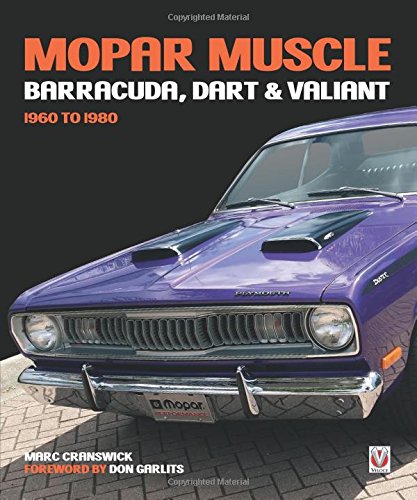
At the dawn of the 1960s, Chrysler Corp introduced a new kind of sophisticated family car called the Valiant. The Plymouth Valiant, and its cousin the Dodge Dart, travelled Detroit’s path from economy car to high-performance machine in style. Snazzier still, were the subsequent Plymouth Barracuda and Dodge Challenger relations that took on all comers in the pony and muscle car wars. By the mid ’70s a change of pace saw Dodge Aspen and Plymouth Volare meet the blend of economy, sports and luxury that buyers wanted. All through the years, and underpinning all models, was Chrysler Corp’s engineering excellence. Such excellence was apparent on racetracks and drag strips across the country, so too were the exploits of racing heroes that became Mopar legends. Through hard times and corporate change, Chrysler returned with the modern Hemi V8 motorvated 300s, Chargers and Challengers. The Demon still lives at Highland Park.
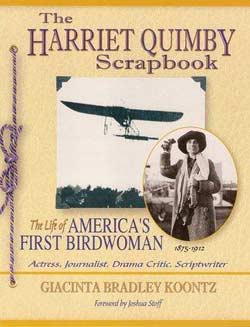
This first complete biography of Harriet Quimby is visually charming for all ages and a handy reference for entertainment, photography, travel, and aviation historians. With over 150 vintage newspaper clips and dozens of never before published photographs, it’s a must for every fan of early aviation.
Carrie Vanderbilt’s pictures of her best friend, Harriet Quimby, remained in storage for over 85 years. These photographs and dozens of other never-before published images are artfully presented with vintage newspaper clippings and Quimby family documents, as if Quimby had pasted them into her own scrapbook. Reprinted for the first time are Harriet Quimby’s seven silent film treatments for American Biograph.
Quimby was disarmingly unique. Ignoring criticism, and creating her own sense of style, she owned several cars, learned how to repair them, and encouraged other women to do the same. She smoked cigarettes, lived alone, and lied about her age. Cleverly calculating her professional career, she represented all that was independent and modern, yet she distanced herself from feminist causes.
Harriet Quimby’s life touched the fringes of the Civil War, the Industrial Revolution, the Ragtime Ear, and the new Age of Aviation. Moving from Michigan to California and finally to New York City during 1903, she was prepared to take it by storm. She had no alternate plan.
New York loved her. America admired her. The world was her oyster until tragedy struck. Before her death at age 37, her potential for continued fame, fortune, and contributions to U.S. history was limitless.
Scientific American eulogized that her death, ” while fitting for an athlete, should never have been the lot of such a fragile flower of sunny California.”.
This scrapbook represents more than the life of one woman. It is our cultural heritage.

SOLD OUT
From the dawn of the very first streamlined aluminum trailer in 1934 to the most recent offerings from genre giant Airstream, Americans have always loved the look, style, and feel of these riveted wonders. Although many beautiful examples are on the road today, an equal number of trailers could use a little, or a lot of, TLC. Some need a minor touchup, some need modernizing and updating, and some need a flat-out restoration.
Author Tony Martin guides you through the process from selecting the right project all the way to polishing your completed streamline aluminum trailer. Every aspect of restoring and modifying your project is addressed including frame, chassis, bodywork, plumbing, electrical, cabinets, appliances, etc. Much of this work is covered in step-by-step restoration photo sequences, giving you a visual guide to converting a road-side eyesore into the belle of the trailer park ball.
Streamline Aluminum Trailers: Restoration & Modification is a must-have book if you currently live in one of these gems at an RV park or are restoring and modifying one for leisure use. Clubs and events are even scheduled around the gathering and appreciation of these timeless beauties. There has never been a book to fully aid in the restoration and modification of these beloved trailers until now. Add this useful resource to your library today.

Three quarters of a million people are in a plane somewhere right now. Many millions travel by air each day. For most of us, the experience of being in an airport is to be endured rather than appreciated, with little thought for the quality of the architecture. No matter how hard even the world’s best architects have tried, it is difficult to make a beautiful airport.
And yet such places do exist. Cathedrals of the jet age that offer something of the transcendence of flight even in an era of mass travel and budget fares. Here are twenty-one of the most beautiful airports in the world.
The book features:
Wellington International Airport, ‘The Rock’ shaped like the dangerous cliffs of a local legend
Kansai International Airport, Renzo Piano’s gigantic project built on three mountains of landfill
Shenzhen International Airport, a manta ray shaped terminal putting this booming region on the map
Daocheng Yading Airport, the world’s highest civilian airport in the middle of the Tibetan mountains
Chhatrapati Shijavi International Airport, rising from the slums of Mumbai like a Mogul palace
Queen Tamar Airport, a playfully iconic modern airport nestled in the mountains of Georgia
King Abdulaziz International Airport, the gateway to Mecca resembling a Bedouin city of tents
Pulkovo Airport, mirroring the city of St Petersburg with bridges, squares and art
Berlin-Tegel Airport, ultramodernity, 1970s style
Copenhagen Airport, an icon from the golden age of air travel
Franz Josef Strauß Airport, sober and easy to negotiate, Munich’s model airport
Paris Charles du Gaulle Airport, the brutalist icon that launched the career of airport architect Paul Andreu
London Stansted Airport, Norman Foster’s return to the golden age of air travel
Lleida-Alguaire Airport, a relic of Catalonia’s early 21st century building boom
Madrid-Barajas Airport, Richard Rogers and Antonio Lamela’s calm, bamboo-panelled Terminal 4
Marrakesh Ménara Airport, a blend of 21st century construction and traditional Morrocan design
Santos Dumont Airport, Rio de Janeiro’s modernist masterpiece
Carrasco International Airport, Rafael Viñoly’s design inspired by the sand dunes of his native Uruguay
Malvinas Argentinas International Airport, echoing the mountains and glaciers of Tierra del Fuego
John F Kennedy International Airport, Eero Saarinen’s glamorous jet-age TWA terminal
Spaceport America, a vision of the future in the New Mexico desert
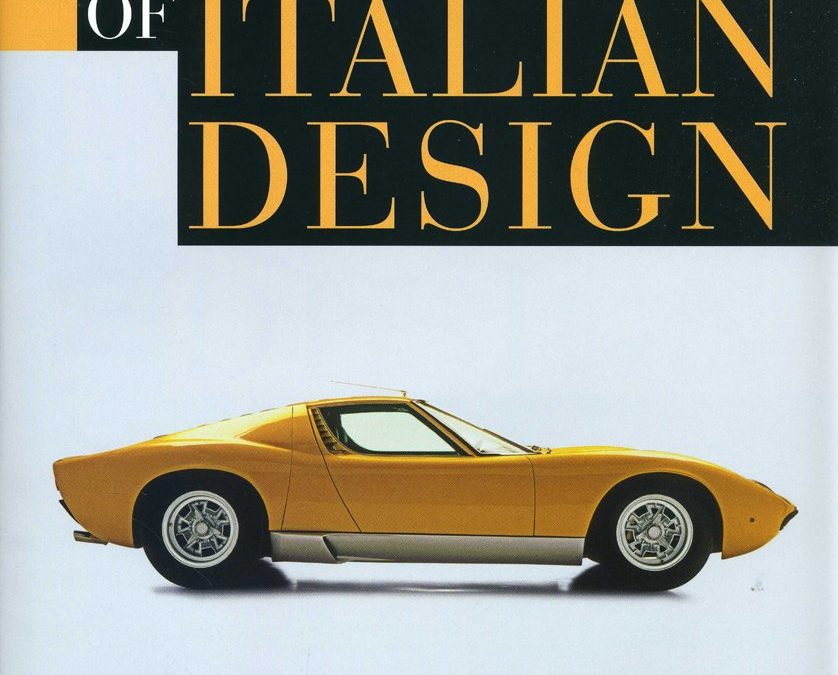
Design in Italy has always reflected the national identity of the Italians themselves: sexy, stylish, and innovative, and with more than a touch of audacity. No other country takes design so seriously, nor treats its leading practitioners with such reverence. In Italy a design is never just a product, but an expression of culture. There is a strongly held belief that good design should be implemented across all aspects of life, or as the architect Ernesto Rogers put it, “from the spoon to the city.”
Masterpieces of Italian Design is an overview of the past two centuries in Italian design and manufacturing. This new title documents the 100 most pioneering designs to come out of Italy, and explains why, with stunning images (including rare archival photographs, illustrations and patent drawings) and explanatory texts.
The Italian design community is at the forefront of modern design practice and has pioneered many styles and movements, from Rationalism to Post-Modernism and Late-Modern. With its strong design-engineering focus, highly skilled craft workshops, and specialized factories, Italy has always provided the optimum creative climate for designers and manufacturers. This major new book features the ultimate examples of Italian design from among others Alessi, B&B Italia, Cappellini, Cassina, Ducati, Ferrari, Fiat, Kartell, Lamborghini, Luceplan, Magis, Moroso, Pagani, and Riva.
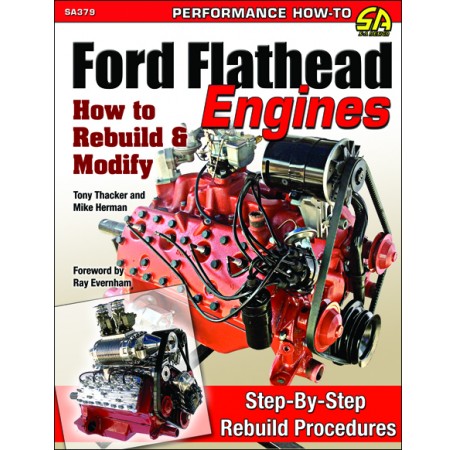
Although not the first V-8 engine ever produced, Henry Ford’s side-valve V-8, launched in 1932, certainly qualified as the first mass-produced V-8 sold to the public. Because of Henry Ford’s stubbornness, the first versions were less than ideal. The technology was in its infancy and cost-cutting measures limited the output and reliability of the early models. Over time, however, the “Flattie” became the go-to powerplant for a whole generation of new hobbyists who were called “hot rodders.” The engine maintained its position in the hobby well into the 1950s, even when more modern overhead-valve designs started coming out of Detroit. It’s hard to overstate the impact that this simple little engine had on a whole generation of enthusiasts. Even today, people choose a flathead for period-correct builds over far more powerful options. The style and sound of a modified flathead is an iconic part of American history.
In Ford Flathead Engines: How to Rebuild & Modify, veteran author Tony Thacker and flathead guru of H&H Flatheads, Mike Herman, take you step-by-step through rebuilding a vintage flathead. One of the most important steps is to actually find a good, usable core; many have been sitting for a very long time and the engine design is prone to cracking. Running changes are also an important consideration when selecting a core, and include cooling system, ignition, and transmission mount. After you have selected a core, Thacker and Herman take you through the entire process of a rebuild, including teardown, parts inspection, machine shop processes, replacement part selection, re-assembly, start up, and break-in.
Also covered is a unique performance build completed at the H&H shop for legendary race car team manager and all-around enthusiast Ray Evernham. It all adds up to more than 500 color photos and insider tips on building what could be called the most iconic engine ever built, the Ford flathead V-8.
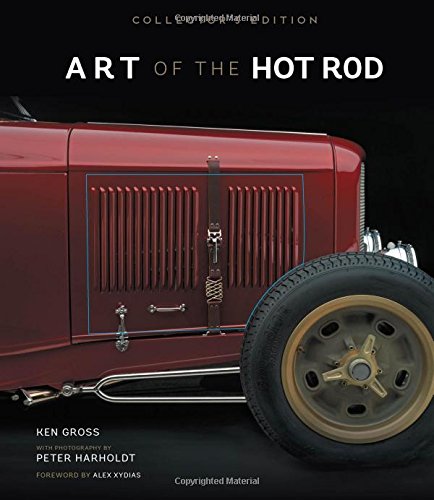
SOLD OUT
Art of the Hot Rod is a feast for the eyes–a gallery of gorgeous hot rods, the best you’ll see from the world’s top hot rod builders!
A hot rod is art on wheels, and this book contains a whole gallery of the best you’ll ever see. In this exclusive collector’s edition of Art of the Hot Rod you’ll find a jaw-dropping array of beautiful hot rod photos, plus special gatefolds, updated text, and exclusive frameable photographic prints.
Art of the Hot Rod: Collector’s Edition celebrates the uniquely American marriage of mechanical know-how and an inspired sense of style and design. Built from the ground up, pieced together from salvaged or hand-built parts, rebuilt with classic looks and modern technology–these automotive works of art are as powerful on the page as they are on the street. The book profiles top builders such as Pete Chapouris, Roy Brizio, Vern Tardel, Troy Trepanier, and fifteen others and features studio portraits of their most outstanding custom creations. Through the stunning portraiture of master photographer Peter Harholdt, Art of the Hot Rod captures these magnificent vehicles as they’ve never been seen before. In addition to full-color photography and updated text, this special collector’s edition features two gatefolds with new photography and four garage art photo prints.
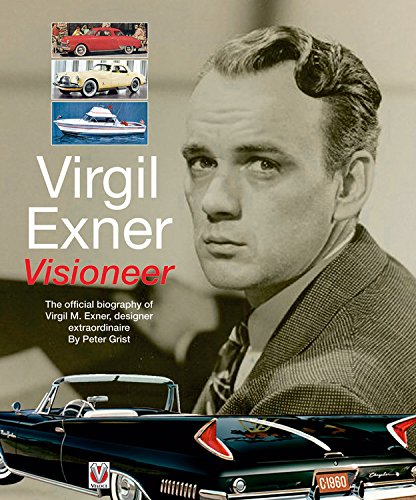
The story of a man that brought his own personal style to the world of industrial design, from automobiles to powerboats. Some 50 years after his design masterpieces wrested styling leadership away from General Motors – Harley Earl. Thirty four years after his untimely death, Virgil Exner’s name still remains inexorably linked to the Chrysler Corporation in the minds of car enthusiasts worldwide.
For an all too brief period, Exner’s name epitomised all that was great and exciting in America. His thrilling automobile designs from the mid-fifties took the world by storm and put Chrysler at the top. His work was nothing less than a revolution. Until the mid-fifties, engineers, creating cars that were reliable but invariably staid and conservative, had dominated auto design. Exner introduced to Chrysler, firstly with his ‘idea cars’ then with production models, vehicles that were wanted for their looks but at the same time, were soundly engineered; automobiles that carried classic proportions and gave the illusion of movement even whilst stationary. His design of the 1947 Studebaker established the design pattern for all modern cars and was a huge success. Along with automobile styling, his talents stretched to many other areas of industrial design, from trains to trucks and boats to Buicks.
This book gets behind the character of the man, his strengths and weaknesses, his personal tragedies and his vision of modern transport. Uncover why he set up in competition with Raymond Loewy, get the real facts behind historic inaccuracies and why he was made scapegoat for the sales disaster of the early sixties, Then delight in his fine artwork and his love of motor racing. With many previously unseen works of art and family photos among the 150 colour images throughout this is a unique and fascinating insight into a pivotal player in the development of the modern automobile.

Indulge yourself with this stunning collection of pin-ups! The art of pin-up glorifies the female form, and John Gladman celebrates beautiful girls from all walks of life. He has a refreshing, timeless style, bringing back the art of the tease at a time when innocence has been lost. Glamour and art meet photography to create John s recognizable and unique look. His imagery is tasteful yet sexy, stirring up sensuality and allure. He has revered and admired the female form throughout his life span, learning posing from the great artists of the past, paying attention to every detail during posing from the hand placement, the arch of the back, to the expressions and nuances, creating an art piece that appears as natural happenstance. John has a modern flair mixed with vintage themes honoring the classic era of the mid-twentieth century.
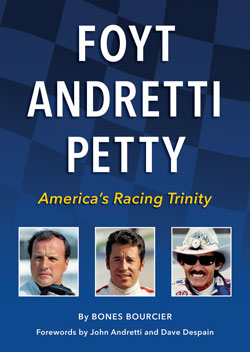
America’s Racing Trinity
Twenty years after they hung up their helmets, their names remain synonymous with the sport they carried to new heights. A.J. Foyt, Mario Andretti, and Richard Petty rose to fame just as the American media – print, radio, and, crucially, television – began to legitimize auto racing. The timing was perfect. In Foyt, Andretti, and Petty, the nation found characters as compelling as any in sports or entertainment.
Foyt was all Texas, John Wayne in a fireproof suit, stomping into Victory Lanes from Indianapolis to Le Mans. Andretti, who’d sailed from Italy with his family at age 15, struck for all outsiders the same yes-you-can chord sounded by another Italian-American, the great Frank Sinatra. Petty, the genial North Carolinian who signed autographs until the last fan went home, put a smiling Andy Griffith face on the American South, no small feat in the tumultuous ’60s.
They crossed paths often, on the track and in the headlines. Take 1967, which opened with Andretti beating NASCAR’s best at Daytona, peaked with Foyt’s third Indianapolis 500 win, and ended with a record 27 victories for Petty. Or the three-season stretch from 1977-79, during which Foyt became the first four-time Indy winner, Andretti earned the World Driving Championship, and Petty captured a landmark Daytona 500.
They even throttled back their careers in near-unison, Petty in 1992, Foyt in ’93, Andretti in ’94. Today all three are revered; as they walk through crowded pit areas, people step back to make way. Charisma never ages.
This is no mere three-act biography. Laced with quotes from first-hand interviews with Foyt, Petty, Andretti, and their peers, and spiced with period accounts from the motorsports world and the changing social landscape, this is award-winning author Bones Bourcier’s history of modern American automobile racing as refracted through the lives of three extraordinary champions.
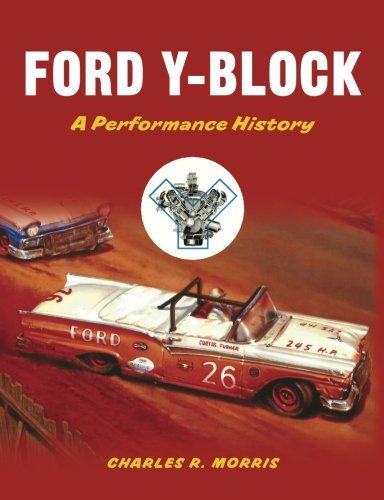
Here is a true accounting of the many racing accomplishments of one of the most maligned engine series ever to roll out of Detroit. The Y-Block Ford V-8, an engine that provided Ford with racing victories unrivaled by any another auto manufacturer of the time, became a victim of the internal and external politics of the auto industry and the bias of the automotive media. This book will document the wins recorded and records set by Y-Block-powered vehicles on the Salt Flats of Bonneville, on NASCAR and USAC stock car tracks, the lofty heights of Pike’s Peak, and on drag strips and bullring dirt tracks from coast to coast. Ford Y Block: A Performance History is packed with previously unpublished photos and personal accounts from those who actually made the history. Long-time Ford fanatic Charlie Morris delivers the ultimate vindication of this sturdy, historic performing engine series as reflected in the current trend towards nostalgic styles of racing. A renewed interest in the Y-Block has fostered the development of modern aftermarket speed equipment. This has led to heretofore unheard of horsepower numbers and performances that have returned the Y-Block to the winner’s circle more than six decades after its debut.

From 1939’s first modern-era pickup to 1978’s 440 V-8 D150 Adventurer SE, Dodge-built pickups introduced many innovations that were later copied by the entire industry. Tough, rugged and practical – three words that describe Dodge Pickups. Here is a comprehensive photographic history of the pickups that earned Dodge its reputation as a leader in engineering and style.
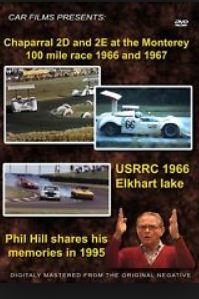
Chaparral 2D and 2E at the monterey 100 mile race 1965 and 1966
Full menu on this DVD start with the Monterey 100 mile race see the Chaparral 2D with drivers Jim hall and hap sharp very rare footage of this car at one point there is a terrific crash with Jim Hall he is out of the race so you can guess who wins!
Next race Monterey 100 mile race 1966 Jim Hall and Phil Hill take the wheel of the famous chaparral 2E this is fantastic footage of the car that started modern day aerodynamics you can see the break flipper working into the corner.
USRRC 1966 Elkhart lake
Drivers Richie Ginther, Dr. Dick Thompson, Charlie Hayes, Chuck Parsons, and many others. This is a very rare film showing this race! Did you know that Haus from bonanza was a car owner in this era?
Phil Hill shares his memories in 1995
This video shot in 1995 is one of many talks Phil has done over the years sharing memories of his career, in this presentation he shows his personal collection of slides starting in the early 50’s. From Italy- driving for Ferrari to telling the tale of how Fangio was kidnapped in Cuba during a F-1 race this 90 min piece covers it all, very rare slides never seen anywhere else! This evening was a very informal group of guys that made for a very relaxed evening of incredible stories, this video is sure to become a future icon of the automotive world.











